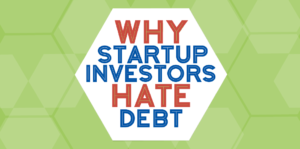Avoid the purgatory of being non-fundable. Find out the investor’s view and structure of their balance sheet in an “investor friendly” manner before submitting an executive summary to startup investors.


Avoid the purgatory of being non-fundable. Find out the investor’s view and structure of their balance sheet in an “investor friendly” manner before submitting an executive summary to startup investors.

Do you have an investor friendly executive summary? What does that mean for your business? Here’s a guide to avoid the purgatory of being non-fundable to startup investors.